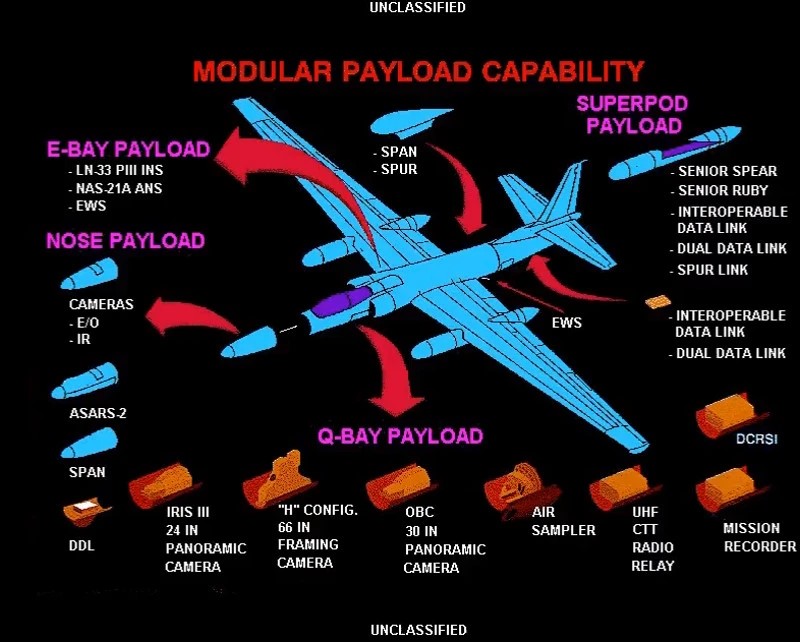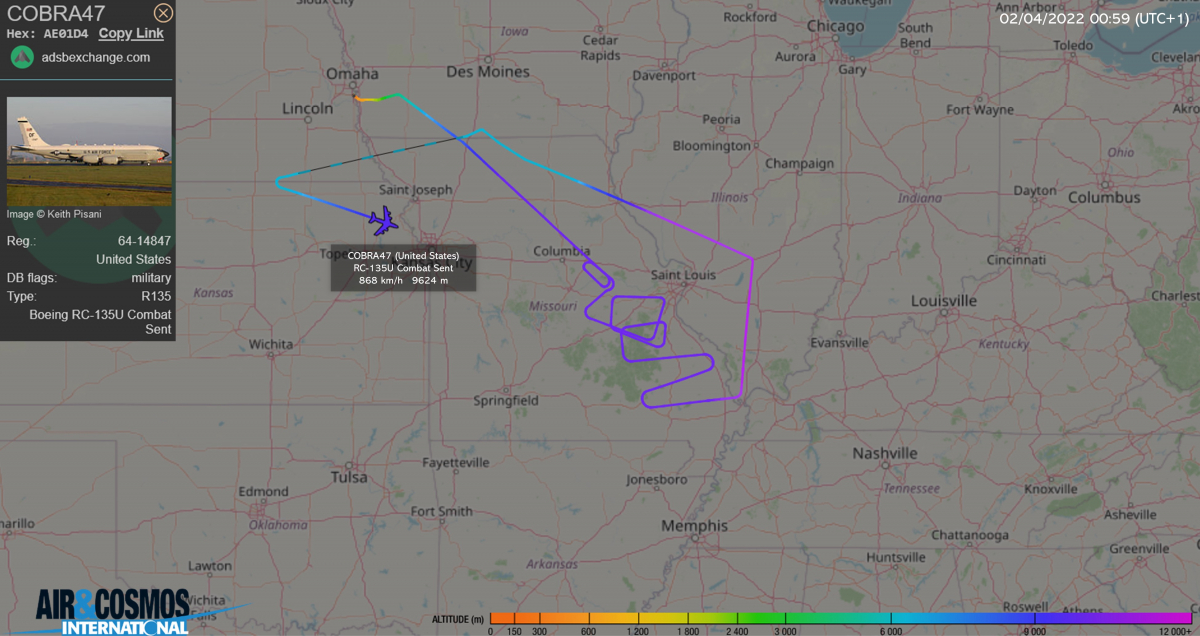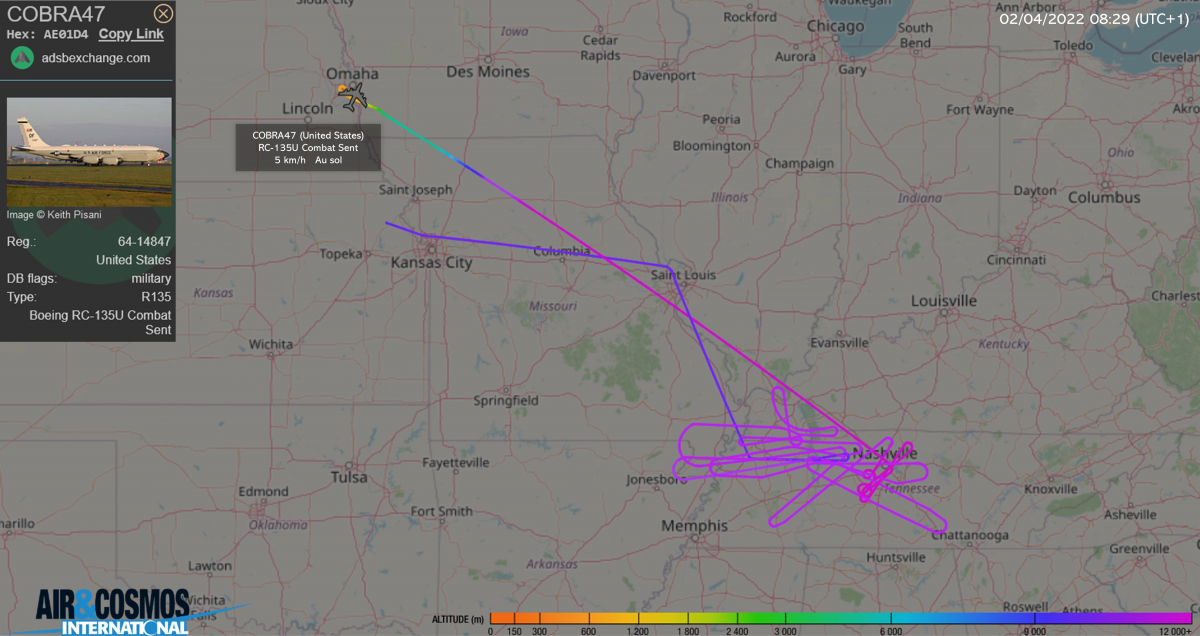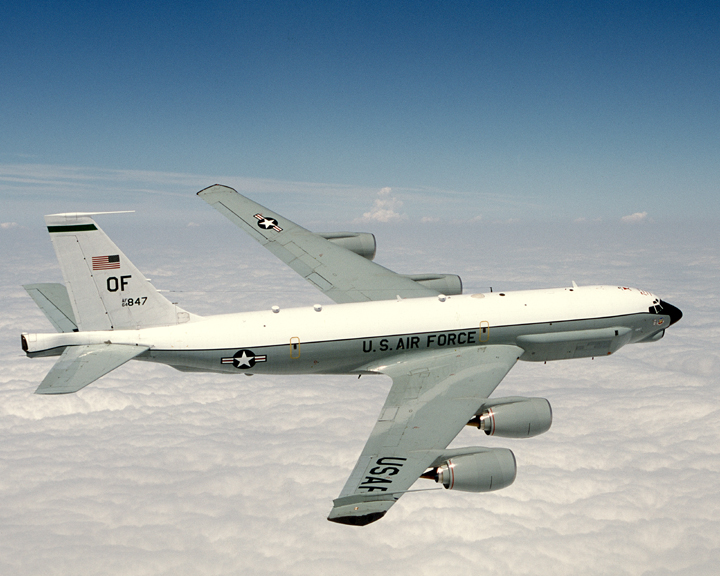The USAF has confirmed that the Chinese balloon was tracked by at least two U-2 Dragon Lady reconnaissance aircraft. The aircraft tracking sites on the lines and the balloon's position also confirm that a very rare and secretive RC-135U Combat Sent electronic reconnaissance aircraft had been deployed in the balloon's path.
A Chinese balloon
On February 2, Canada and the United States formally confirmed that a stratospheric balloon was flying over U.S. territory (article on the subject). This announcement was not a surprise as the latter was actually followed for two days by the Armed Forces of both countries. China later formally identified the balloon as one of its own and used for meteorological purposes. The United States had already announced the identity of the balloon but disputes its use: it is a spy balloon.
The U-2s out
Since its first flight in 1956, the U-2 Dragon Lady spy plane has continued to fly for the US Air Force (USAF). In addition to having been continuously modernized, to arrive at the U-2S standard, this aircraft has also seen its capabilities develop: it is fully modular and can therefore cover a very wide range of functions (optical reconnaissance, electronic,...) in order to carry out a reconnaissance mission, as demonstrated by the image below.


In addition to its reconnaissance capabilities, it is also one of the few USAF aircraft that can fly at very high altitudes; the USAF officially states that the U-2S can fly at an altitude of more than 70,000 feet (or more than 21,212 meters), thanks in part to its engine and long wings. However, the balloon in question was flying at an estimated altitude of 60,000 feet (18,300 meters), well above the maximum altitude of many aircraft. By comparison, the F-22 Raptor fighter jet could fly at an altitude of more than 50,000 feet (or 15,000 meters).
On the other hand, the USAF did not specify what equipment the Dragon Lady carried: were they only used to track the balloon at an altitude where they could fly or did they also use their flights to try to gather information about the balloon?
Strategic Electronic Reconnaissance
It is certain that the two U-2S were not the only aircraft engaged in tracking the Chinese balloon: tankers, fighters (and in particular F-22s), AEW&C,... On the other hand, the USAF did not mention the presence of other electronic reconnaissance aircraft. However, by looking at the various sites tracking aircraft in flight, it was possible to see an RC-135U Combat Sent electronic reconnaissance aircraft (images below).
The latter took off from its Offutt Air Force Base (Nebraska, United States) around 9:00 p.m. (Paris time) on February 3. It then headed over the cities of St. Louis (Missouri) and Nashville (Tennessee), both of which the Chinese balloon was flying over at the time. After a flight that will have lasted 7.5 hours, the Combat Sent landed at 8.29 a.m. (Paris time) at its Offutt base.
Currently, only two RC-135Us are in service with the U.S. Air Force. In addition to being a rare aircraft, it is used for strategic purposes only, for the purpose of providing information to the President of the United States, the Secretary of Defense, the Joint Chiefs of Staff and theater commanders. Like most of the Offutt Base reconnaissance fleet, the RC-135U is a classified aircraft. From the only technical information available, it can be said that this aircraft is in any case capable of locating, analyzing and identifying radar emissions (naval, airborne or ground).




Splash one
On February 5, the Chinese balloon was over the Atlantic, not far from the U.S. coast of North Carolina. An F-22 then fired an AIM-9X Sidewinder short-range air-to-air missile, destroying the balloon. It then descended rapidly before "splashing" into the sea. Air and sea traffic had been halted throughout the area: in addition to ensuring safety, this measure also allowed the recovery of the balloon's components by several U.S. Navy and Coast Guard ships.
In addition to destroying this balloon, this event was also the first offensive firing of an F-22. For the occasion, the call sign used by the Raptor, FRANK01, was a reference to Frank Luke. This American pilot of the First World War is known in the United States for having destroyed, in only 17 days, a total of 14 German observation balloons, receiving in passing the nickname "Arizon Balloon Buster". He would die in aerial combat on September 29, 1918, and was posthumously awarded the Medal of Honor, the highest American military honor.
Découvrez cet article sur Air&Cosmos

